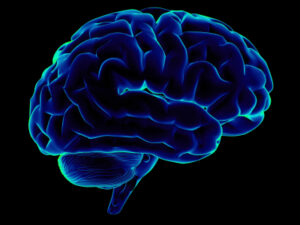Polycystic Ovary is a condition where there is excess androgens which is a male hormone and excess of insulin in the body. It can be genetic, inflammatory or because of lifestyle factors. Insulin resistance that is inherent in PCOS leads to excess insulin and androgens. This leads to androgenic symptoms like male symptoms like hair on the face and acne. A combination of ultrasound picture of polycystic ovaries, androgenic symptoms and menstrual irregularity is known as PCOS.
WHAT IS THE PREVALENCE OF PCOS & HOW DOES IT PRESENT WORLD WIDE?
Now 10% of the women of child bearing age are estimated to have PCOS and less than < 50% of them are properly diagnosed, so, a lot needs to be done in that field. This is the world map and you will see India as the blue area and there is severe metabolic syndrome. PCO is associated with metabolic syndrome, which means it could lead to obesity, diabetes, skin problem, so this is very much common in South East Asia and pcos presence in different form in different part of the globe. We see couples and women with different ethnic origin in our clinic. South East Asia, Indian, Pakistani, Bangladeshi have increased adiposity, insulin resistance, diabetes and metabolic risks . Caucasian have the mild phenotype and the east Asians that is from Japan, Korea and China have lower BMI and milder hirsutism. Africans have higher body mass, they are more obese, there metabolic feature are also high.
HOW IS PCOS DIAGNOSED? HOW HAS IT CHANGED OVER THE YEARS?
So the basic diagnosis initially use to be something we called the Rotterdam criteria, means either you have irregular periods or late periods, or you have excess androgen symptoms like balding, facial hair, pimples or acne or you have the ultrasonic picture of the PCO. If you have any two of this three you fitted into the PCOS. Now this was carrying on till the last decade till 2018 and then in 2018, there was this International evidence based guideline, where all over the world all the major bodies, the American society, the Australian society, the European society, the Centre for PCOS research and they have get together and they came to this diagnosis, that if you have irregular cycles, and if you have acne or hair on your face that is hyper-androgenism you are diagnosis is establish of PCOS, but if you do not have acne or hair and you have you blood test which is showing increased testosterone, then also you fall into that criteria. If you either have just the irregular periods or just the increased evidence of testosterone then you need to do an ultrasound which should show polycystic ovary, then you come under this diagnosis.
https://www.eshre.eu/Guidelines-and-Legal/Guidelines/Polycystic-Ovary-Syndrome
WHAT OTHER CONDITIONS MIMIC PCOS?
Off-course there are many other causes of irregular periods like hypothyroidism, hyperprolactinemia, adrenal syndrome, hypergonadotropic hypogonadism , Cushings and Testosterone secreting tumors. Hence, proper blood work and ultrasonography must be done before confirming PCOS diagnosis.
HOW IS PCOS DIAGNOSED ?
The ultrasonic picture of PCOS with multiple cyst, that is seen on ultrasound, (usually it is not needed for young girls as many have a PCO picture which corrects over time), only in an adult group and it is done preferably with a transvaginal probe . Some studies have indicated more than 20 follicles per ovary for a diagnosis. However in the Indian context we take up to 10-15 follicles each ovary and the volume of each ovary should be more than 10 ml. Transabdominal scans are not enough for the diagnoses of PCOS.
Clinical hyperandrogenism is something like acne which is seen in this girls face it could also be less hair a frontal paucity of hair, so you have to have acne, alopecia, increased hair over your face, in and around your chest in your abdomen, so all these things they are various clinical criteria for diagnosing them and they come under the symptoms under clinical hyperandrogenism, sometimes you cannot diagnose as the clinical hyperandrogenism, then you need to do blood test, free testosterone, androgen index, bio-available testosterone, DHEA androstane are not very reliable test.
Yet another very popular blood test which is AMH gives an indication but now diagnostic. Usually the normal levels are 1-2ng/ml and anything the pcos lady do have higher levels 4 or 5 ng/ml but it cannot be used as diagnoses.
https://www.advancefertility.in/polycystic-ovary-syndrome-pcos/


